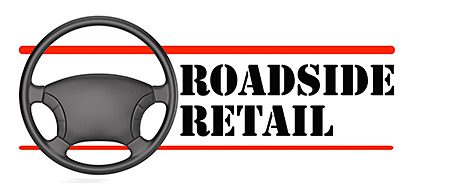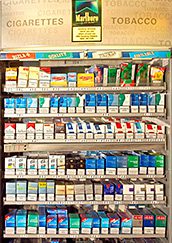Tobacco sales are hugely important to many forecourts. But next April will see tobacco retailing in all impulse outlets change dramatically when the tobacco display ban takes effect. How should forecourts prepare?

FORECOURTS present special logistical challenges to operators. It’s a different type of retailing.
Certainly it is, as it is with almost all retailing, good to get to know your customers well. And some forecourts have been imaginatively turned into hybrid operations that serve the local community, including pedestrian customers, as a source of fresh produce and more.
But there are times when service speed is of the essence – when a rollover lottery queue is getting anxious as 7.30pm approaches, emergency top-up shoppers dive in for critical items, and drivers in a hurry make it clear that they want their card transaction and receipt issuing exercise completed in double-quick time.
At those moments you don’t want to be searching around in the dark for the Lambert & Butler, Amber Leaf or Café Crème Blue.
But come 6 April next year your forecourt’s cigarettes, RYO tobacco and cigars will have to be hidden away by law.
And in Scotland you will be severely limited in the amount of display space you will be able to reveal, even when you make a tobacco transaction at the request of a customer or restock the flap-covered gantry. And you will also be very limited in how you show prices and info.
Dark market day (6 April 2015, the day when small stores join the supermarkets in being required to obey the rules of the tobacco display ban) is getting very close.

It will be vital for all shops but perhaps especially for forecourts (where space behind the till can be tight and where, as we have already mentioned, there can be frequent intense periods of demand on the tillpoints) to be well-prepared.
What are the key considerations for forecourt operators and other retailers?
Well, make sure you know the rules. If you haven’t already done so then download the Fingertip Guide to the Tobacco Display Laws produce jointly by the Scottish Grocers’ Federation and the Scottish Wholesale Association.
The guide is available on the websites of both organisations at www.scottishshop.org.uk/latest-news/289-tobacco-display-the-essential-guide-for-retailers and at www.scottishwholesale.co.uk/media/20954/swa_fingertip_guide_web.pdf
If you have an iPhone you can also use the iPhone app available on the App Store, search for Tobacco Displays Scotland.
And make sure you know what your suppliers are doing and what they advise.
Big tobacco firms that have large numbers of tobacco gantries installed will be ready to update many of them to meet the new regulations.
If you haven’t already discussed the tobacco display ban with your main reps it would be wise to do so as quickly as possible.
The giants will make the necessary alterations to many units but might not do so where they deem it uneconomic.
They’re likely also to be looking for something in return, like adherence to their proposed post-dark-market planograms plus agreed positions and/or space for their products.
You might be just fine with that. On the other hand you might want to consider if any other arrangement, such as installing your own gantry for the dark market, would suit you better.
There are specialist suppliers of tobacco display ban compliant equipment and some tobacco companies other than the UK giants have said they are ready to help retailers who want to go down a more independent route.
Work on your range well ahead of the tobacco display ban and consider the likely key issues that will arise after the ban is in place.
There’s some evidence that in a post-ban world the best-known brands and the cheapest brands in each part of the tobacco market become especially important.
Analyse your current sales closely, try to work out if there have been noticeable trends, changes or market movements in the last year or so.
Speak to suppliers and wholesalers about the relative popularity of the various brands and products on the market.
Analyse your own outlet’s footfall and customer base. Do you have significant seasonal variation because of tourism flows or seasonal work availability, for example? Is your clientele of various ages or is it dominated by young adults or by older folks?
You will know much of that already but given the important change that is coming it would be wise to re-familiarise yourself with those aspects of your business.
Remember, staff will be working on memory rather than clear sight so the simpler and more sensible the product positioning the better.
Decide your must-stocks, plus the items you stock for regular customers, plus those that are requested often enough to earn their place. Again, in each part of the market it will be worth ensuring you are well-stocked enough to avoid consumer disappointment on the big brands and that you have viable products to offer when someone asks “what’s cheapest?”.
With your choices made, think layout. You might be following a supplied planogram or you might be deciding your own layout but make sure the products are in sensible, intuitive positions, in a logical ‘flow’.
Remember, staff will be working on memory rather than clear sight so the simpler and more sensible the product positioning the better.
Have substantial stocks of the best sellers behind the most accessible and most easily remembered flaps. Remember, you don’t want to run out of popular products, it won’t take long to gain a reputation as an outlet that is likely to disappoint consumers when they’re looking for their favourites.

Staff familiarity with the products will be crucial in forecourts.
Train staff early and regularly. When the flaps actually finally do cover the products it might be worth running regular sessions in the early days and weeks and refresher training at intervals after the system beds in.
Stocking PMPs is likely to be very important for forecourt operators who want to gain and maintain a reputation for good value among tobacco consumers.
The strongest attraction of PMPs for many consumers is the reassurance it gives them that they are not being ripped off, that the retailer isn’t hiking prices just because he or she can. Producing a PMP for a customer in a dark market could well be very reassuring.














